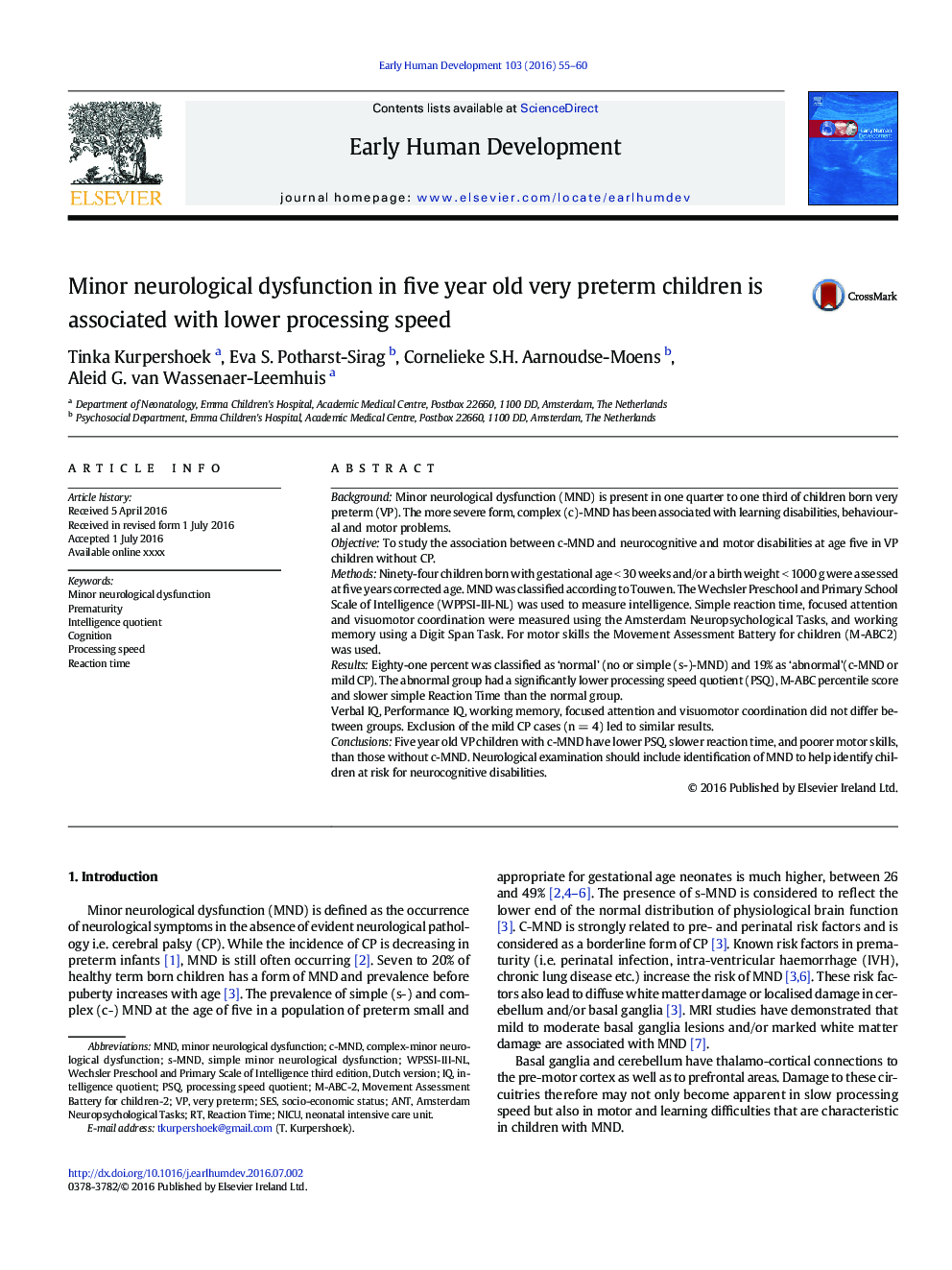| Article ID | Journal | Published Year | Pages | File Type |
|---|---|---|---|---|
| 3916369 | Early Human Development | 2016 | 6 Pages |
•The incidence of Minor neurological dysfunction (MND) in very preterm infants (VP) is stable in the last decade.•Complex-MND was previously found to be a risk factor for cognitive, motor and behavioural developmental problems.•In 5 year old VP children, c-MND is also associated with lower processing speed quotient and slower reaction time.•Diagnosis of c-MND as neurological outcome measure is important because of it's clinically meaningful associations.
BackgroundMinor neurological dysfunction (MND) is present in one quarter to one third of children born very preterm (VP). The more severe form, complex (c)-MND has been associated with learning disabilities, behavioural and motor problems.ObjectiveTo study the association between c-MND and neurocognitive and motor disabilities at age five in VP children without CP.MethodsNinety-four children born with gestational age < 30 weeks and/or a birth weight < 1000 g were assessed at five years corrected age. MND was classified according to Touwen. The Wechsler Preschool and Primary School Scale of Intelligence (WPPSI-III-NL) was used to measure intelligence. Simple reaction time, focused attention and visuomotor coordination were measured using the Amsterdam Neuropsychological Tasks, and working memory using a Digit Span Task. For motor skills the Movement Assessment Battery for children (M-ABC2) was used.ResultsEighty-one percent was classified as ‘normal’ (no or simple (s-)-MND) and 19% as ‘abnormal’(c-MND or mild CP). The abnormal group had a significantly lower processing speed quotient (PSQ), M-ABC percentile score and slower simple Reaction Time than the normal group.Verbal IQ, Performance IQ, working memory, focused attention and visuomotor coordination did not differ between groups. Exclusion of the mild CP cases (n = 4) led to similar results.ConclusionsFive year old VP children with c-MND have lower PSQ, slower reaction time, and poorer motor skills, than those without c-MND. Neurological examination should include identification of MND to help identify children at risk for neurocognitive disabilities.
